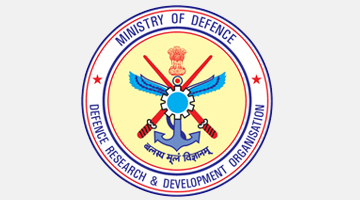Income Tax Cadre Review : A review
TIOL-DDT 122
26 05 2005
ThursdayOne reason for restructuring of the department, as stated in the Cabinet Note, was poor career management and promotion prospects resulting in demoralization of officers in the Indian Revenue Service making them lag behind other comparable Central Services. And so, several posts were created, but not all of them filled up. This indicated that these posts would be redundant and not necessary. Incidentally, according to the instructions of Ministry of Finance in O.M No7 (7)-E (Co-ord)/93 dated 3 May 1993, these posts would be deemed to have been abolished if they continued to remain unfilled for a period exceeding one year. Should there be another review to abolish these posts?
At What Cost?
The Board did not have a mechanism to monitor the progress of its promise of a saving of Rs.3.05 crore on salaries and wages consequent to upgradation of posts after restructuring as no separate accounts were maintained. So nobody knows whether the costs really came down.
Results of promised benefits of restructuring
Revenue did go up, not because of increased number of Commissioners, but may be in spite of them.
Tax Recovery
The administrative machinery of tax recovery was strengthened by allocating one TRO exclusively to each range consequent to the restructuring of the department. Sanctioned strength of TROs was increased from 204 as on 31 March 2001 to 472 after restructuring representing an increase of 131 percent. The sanctioned strength was further increased to 509 as on 31 March 2003 but decreased to 462 as on 31 March 2004.
The position of demand recovered during the year remained at around 19 percent after restructuring, which was already achieved in 1998-99.
Case disposal:
The total number of cases disposed of had declined from 11.11 per cent in 1999-2000 to 0.96 percent in 2003-04.. The position of prosecutions launched, convictions obtained, offences compounded and acquittals allowed has, not changed for the better after restructuring of the Income Tax Department.
Revenue from Search:
Board has no statistics on this!.
Scrutiny
The completion of scrutiny assessments had decreased from 73.6 percent to 51.2 percent during the same period.
Productivity per Assessing Officer
The proposal made to the Union Cabinet by the Ministry/Board on �restructuring of Income Tax Department� promised an estimated 200 percent increase in �productivity� at organizational level.
This number of assessments has declined from 82.31 per assessing officer in 1999-2000 to 44.50 per assessing officer in 2003-04. Why? There are too many Commissioners and they actually interfered and blocked the progress of assessments.
Appeals
One of the benefits promised in the proposal of restructuring was immediate additional revenue gain of Rs.7500 crore by increasing the number of first appellate authorities and TROs. Besides, period for redressal of grievance was to be reduced from 18 months to six months.
Since the department was not maintaining statistics on revenue figures involved in appeals filed, disposed off and balance at the end of the year, the basis on which additional revenue gains of Rs.7,500 crore by increasing the number of CsIT (A) and TROs had been promised in the proposal to the Union Cabinet was not ascertainable.
The average number of appeals disposed off by each CIT (A) in a month during 1999-2000 was 43.12, which came down to 27.53 during 2003-04.
Interest on refunds
As per the proposal on restructuring, the interest burden was expected to be reduced by Rs.350 crore per annum with reduction in average time taken in issue of refunds. Neither had the amount of interest paid nor the average delay in payment of refund decreased as promised in the proposal for restructuring.
Delay in implementation of the scheme: Cabinet approved the scheme in August 2000. Revised jurisdictions were notified on 31 July 2001 for implementation by the department from 1 August 2001. One year was spent in revising the original orders and in implementation of the scheme of restructuring.
Transfer of records � No records are available to show that records have been transferred properly.
These are the findings of the CAG. The results in the other Board must be similar. But there are a few tips the CBEC can learn from CBDT, if they have not already learnt. Don�t maintain data on important aspects and even if they are made don�t make them available to Audit.
In spite of the risk of repetition, the CAG�s conclusions are worth recapitulating. The findings of the CAG are disturbing to put it mildly and deserve the urgent attention of the minister.
� There has been increase in revenue; to what extent this increase was directly attributable to efficiency and productivity improvement after restructuring was not ascertainable in audit.
� Large number of vacancies remained unfilled at various levels for a number of years indicating that these posts may not really be needed as the department�s performance at �macro level� in terms of overall revenues realized and summary assessments completed has apparently improved despite these �vacancies�.
� After restructuring the average number of scrutiny assessments completed by an assessing officer had declined.
� In the absence of details of taxes collected as a result of scrutiny/ assessments that have stood the test at least at the first stage of appeal, improvement effected in the quality of scrutiny assessments was not ascertainable.
� Efficiency in bringing stop filers back to the tax net and the accretion of revenues from this function was not ascertainable.
� Almost 46 percent of outstanding arrear demand was locked up in appeals at the CIT(A) level. Pace of disposal of appeals at CIT(A) level was not according to the norms indicated by the Board and there was no mechanism to establish and relate the fact of release of tax demands for recovery to increase in the number of posts of CIT(A) after restructuring.
� The increase in number of summary assessments disposed off annually after restructuring was almost entirely attributable to �outsourcing� of data entry and related functions rather than direct efficiency or productivity improvement after restructuring.
� No separate account of the costs incidental to restructuring was maintained. Substantial expenditure consequent to and related to restructuring exercise had not been separately budgeted or projected as expenditure relating to restructuring.
� In the absence of clear targets and well-designed, transparent and verifiable criteria of efficiency and productivity, monitoring has suffered. There was no dedicated or clearly identified Wing/Division in the Board to effectively monitor efficiency and productivity improvements consequent to restructuring.
� Apart from introduction of new chain system of internal audit and new system of inspections, online tax accounting system and electronic filing of TDS returns, audit did not notice evidence of concerted efforts at rationalization of work norms or practices after restructuring. Despite the introduction of the chain system of internal audit, the internal control of the department had weakened after restructuring.
(from CAG�s report to Parliament).
Import of metallic waste - DGFT adds more ICDs
The shock of the container blasts have died down and slowly more and more ICDs are being added to the list of stations through which the scrap can be imported. It is sincerely hoped that these new additional places have the infrastructure for proper scrutiny. As usual, after the DGFT, the CBES has to come up with another notification to actually make the DGFT PN effective.
PUBLIC NOTICE NO. 10 /(RE-2005)/2004-2009, Dated: May 20, 2005
Until Tomorrow with more DDT
Have a Nice Day.
Mail your comments to vijaywrite@taxindiaonline.com















